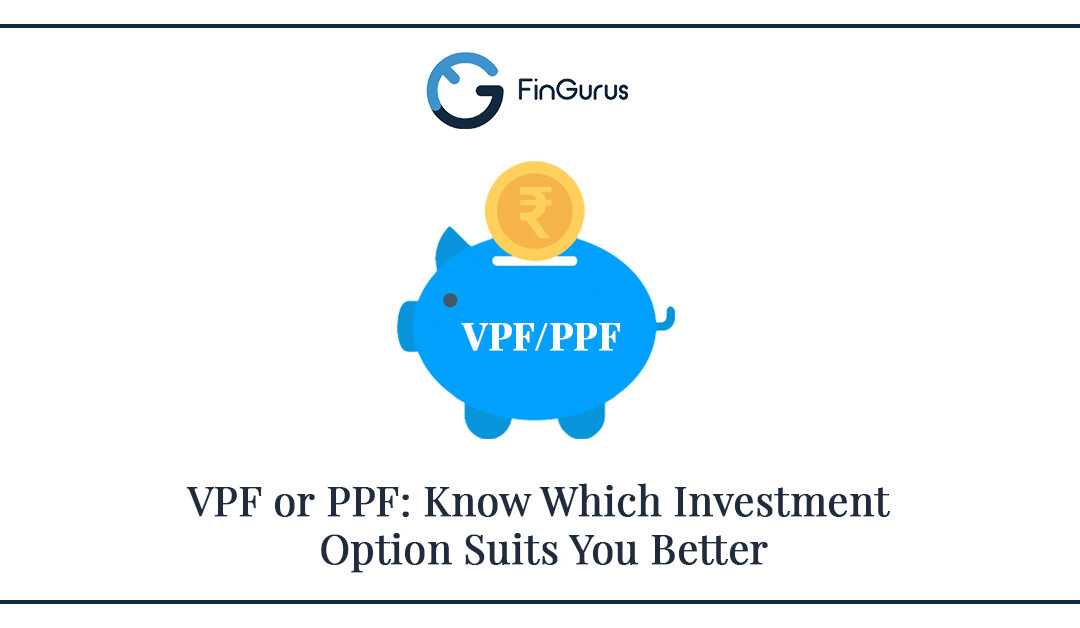When it comes to creating a retirement fund in the vast Indian market, people still find solace in the Provident Funds. Provident Funds (PF) lets the employees enjoy supreme corpus security at the end of employment, which can be easily used as a retirement fund.
In this respect, there are two main Provident Funds in the country: the Public Provident Fund (PPF) and the Voluntary Provident fund (VPF). While both these instruments are popular for tax-saving benefits under Section 80C, many find it challenging to understand a better investment plan for them.
So, here we are, decoding the various aspects associated with PPF and VPF so that you get the chance to assess them before opting for a retirement plan.
Public Provident Fund
Introduced by the National Savings Institute in 1968, the Public Provident is a government-backed scheme where individuals from all sectors can invest. Be it a salaried individual, student, retired person, or self-employed individual, any citizen living within the Indian borders can access the benefits of the PPF.
Moreover, being administered by the government, the Central Government manages factors such as the PPF interest rates and paying returns to the account holders. The interest rates are revised quarterly depending upon the rates of the government bonds.
Other than this, PPF is also familiar among Indian citizens as one of the most popular tax-saving instruments. By investing in the PPFs, a taxpayer can avail of up to Rs. 1.5 lac as tax benefit every year.
To enjoy the benefits of a Public PF account, the account holder has to pay a minimum of rupees five hundred in a year, and one cannot invest more than Rs. 1.5 lakh in a period of one year.
Key Aspects of PPF:
Eligibility Criteria: Any individual who lives in India can open a PPF account. But, note that this also means that NRIs are not eligible to have a PPF account. Likewise, HUFs are also not permitted to open a PPF account.
Contribution towards PPF: When it comes to contributions, a PPF account holder can pay as low as Rs. 500 in an entire year until maturity. On the other hand, the maximum amount one can deposit in a year is Rs. 1,50,000. Also, you cannot deposit more than 12 times in a year.
Maturity period: In the case of PPF, the maturity period is 15 years. A PPF account holder can extend this period by a block of 5 years at a time once the maturity period has been covered.
Tax Implications associated with PPF: Once an account holder of the PPF, he/she can avail tax-exemption of up to Rs. 1,50,000 yearly under Section 80C of the Tax Laws of India. Additionally, the interest accrued and the returns earned at the end of the maturity will be exempt from taxes.
Voluntary Provident Fund
The Voluntary Provident Fund is more of an extension of the EPF, Employee’s Provident fund. In this case, an employee voluntarily parks a certain amount from his salary in his PF account.
As per the EPF laws, when a person works in an organization where the employee strength is more than 20, they must maintain an EPF account. And, for this, both the employer and the employee have to contribute 12%.
The EPF accounts are locked in until the employee retires or under any circumstance where he needs to withdraw the funds before maturity. If, after investing in the EPF, the employee wishes to invest more than the minimum requirement (that is, more than 12% in the present times), they can do this under the provisions of the Voluntary Provident Fund. But, do note that the employer’s contribution will not change.
The contributions made towards the VPF accounts are forwarded to the EPF account of the employee, and it earns the same interest rate as that of an EPF account.
A VPF account is relatively easy to operate. To start contributing towards the VPF, you can raise a request for the same to the HR department or the organization’s accounting. After this, the amount will be automatically deducted from your salary and get transferred to the EPF account.
Important Factors Related to VPF:
Eligibility Criteria: To become eligible for a VPF account, an individual needs to be an employee of the organized sector. The organization he is working in should compulsorily have a minimum of 20 employees. However, if some companies want, they can open EPF accounts for their employees even if the minimum employee strength is not reached.
Contributions towards VPF: There is no set amount when it comes to depositing in a VPF account. An employee can also pay the entire amount of their monthly salary (Basic pay plus DA) if he chooses to.
Maturity Period: An employee cannot use the VPF money until he retires or chooses to change his workplace. In case an individual changes his employer, he can transfer his EPF account.
Moreover, an individual can also withdraw his dues before maturity in special conditions such as marriage, medical emergency, out of employment for more than 2 months.
Tax implications on PPF: The contributions made towards the EPF account fall under the E-E-E category. This means that the contributions you make to the VPF account are completely exempt from taxes. Also, like the PPF, contributions made up to a limit of Rs. 1.5 lakh is tax-exempted.
Which One is Better?
Both VPF and PPF offer excellent tax-saving options to the employees and ensures guaranteed returns. These factors make both instruments a good retirement option for individuals having less or no risk appetite.
People who are working in eligible organizations can park their money in the VPF accounts. And, by investing in the VPF accounts, they do not have to look for any tax-saving options as they can enjoy substantial tax benefits offered under Section 80C. Also, VPF accounts are quite simple to access, and the contributions are directly deducted from the individual’s salary.
Individuals such as housewives, students, etc., who cannot access the EPF or the VPF account can invest in PPF. Moreover, as it associates a lock-in period of 15 years, it can serve as a great long-term investment tool. This scheme, too, offers you guaranteed returns and helps you enjoy tax exemption under the 80C limit.
Conclusion
Now, to sum things up, both VPF and PPF come with their own set of advantages and disadvantages. Therefore, make sure you are completely aware of factors such as your liquidity needs, financial goal, withdrawal and premature withdrawal rules associated with the funds, etc., before you make a final call.
And, for more information, you can always seek help from us!

